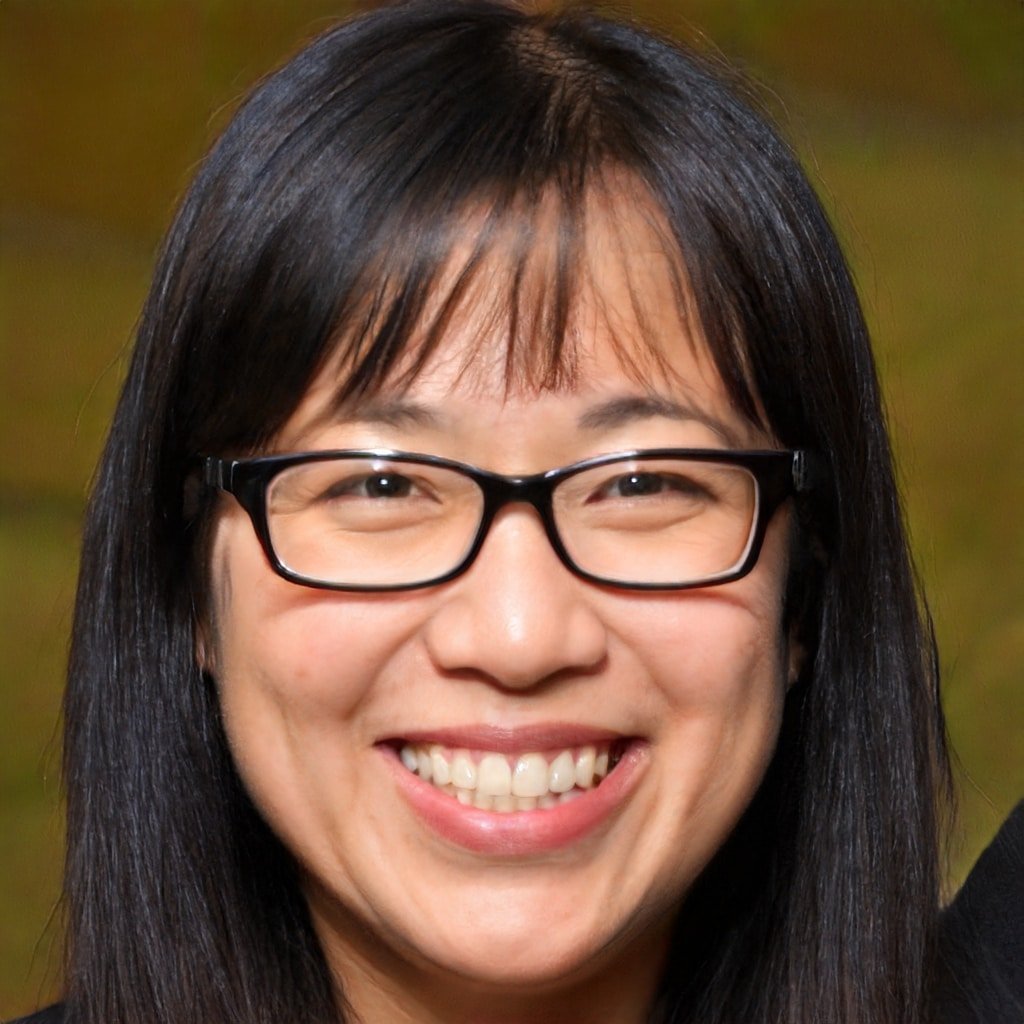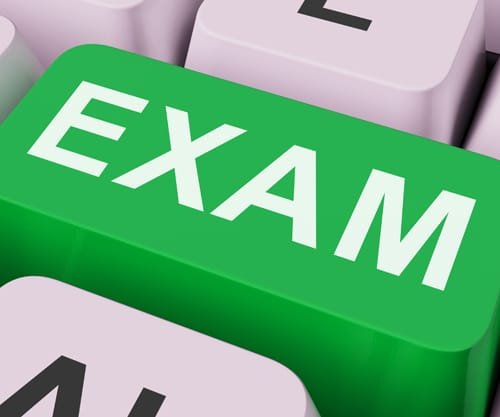Effective Science Tuition | Secondary School Science Tuition In Singapore | Primary School Science PSLE | Tuition For Science | Best Science Tuition In Singapore
Science Tuition By Experts
33,000 Experienced Tutors
Current/Former MOE Teachers
PhD/Master's/Post-Doctoral Tutors
Graduated/Undergraduate Reliable Tutors
Tutors With Proven Track Records
Founded By Former Principal Of Top MOE School

A very warm welcome to the Sunshine Tutors website!
I am Diana Khoo – Columbia University, MA (Gifted Education)
Academic Director,
Sunshine Tutors Singapore
Former MOE teachers match you with the most qualified private tuition teachers. We know what works.
Your grades will improve because:
- Our agency hires only Science tutors who are serious about teaching
- 95% of our clients continue after the 3rd lesson, meaning that parents are very satisfied with the tutor they chose
- Within 6 hours, we will show you profiles of between 4 to 10 experienced and qualified tutors that best match your tuition requirements and budget
- Our tuition coordinators are former MOE teachers. We therefore know which are the best private home tuition teachers in Singapore who have the correct skills that can help your grades quickly improve, using the latest MOE syllabus and grading schemes
- We interview and shortlist tutors very rigorously because you have no time to lose when preparing for higher grades
- Over 80% of our students achieve at least 1 grade improvement within 1 month after tuition starts
- We have Singapore largest and best team of private home tuition teachers who are current/former MOE teachers, tutors with at least 2 years of proven ability to improve their students’ grades, undergraduate/graduated tutors, tutors who have PhD/post-doctoral/Master’s credentials. From the best universities


Effective Science Tuition | Secondary School Science Tuition In Singapore | Primary School Science PSLE | Tuition For Science | Best Science Tuition In Singapore
Improve Grades NOW
Primary 3 Science Tuition
Primary 4 Science Tuition
Primary 5 Science Tuition
Primary 6 Science Tuition
PSLE Science Tuition
Secondary 1 Science Tuition
Secondary 2 Science Tuition
Secondary 3 Science Tuition
Secondary 4 Science Tuition
GCE O Level Science Tuition
SEC Science Tuition
International Baccalaureate Science Tuition
Hire Science Tuition Teacher.
Definite Grade Improvement Within 1 To 3 Months.
Tutors: Please ensure that you have registered at https://sunshine-tutors.com/latest-jobs-psle-gce-o-a-level-tutor-teacher/
We are not able to accept any tutor registrations through this HIRE TUTORS form. Thank you.
Clear Explanations By Competent & Patient Science Tuition Teachers
Expert Guidance In Homework Preparation, Completion Of Assignments & Projects, Intensive Syllabus Revision, Exam Techniques.

33,000 Experienced Tutors
Tutors With Proven Tutoring Track Records
MOE Teachers
PhD/Master's/Post-Doctoral Tutors
Graduated/Undergraduate Reliable Tutors
Ms HP has 9 years of Science tuition experience. She is NIE-trained and taught at MOE schools for 11 years. Ms HP has a Bachelor’s in Biomedical Engineering from NUS (Honours). Her private tuition students attended Unity Secondary School, Serangoon Secondary School, CHIJ St Joseph’s Convent, Ngee Ann Secondary School, St Andrew’s Secondary School, and Bukit View Secondary School.
Mr TKL has 6 years of Science tuition experience. He has a Master’s in Materials Science & Engineering from NUS. His Bachelor’s in Biochemical was from NTU (2nd Upper Class Honours). Mr TKL was an MOE contract teacher for 2 years. His private tuition students attended Raffles Girls’ Primary School, Shuqun Primary School, Henry Park Primary School, Bukit Batok Secondary School, Crescent Girls’ School, and Anderson Secondary School.
Mr YW has 13 years of Science tuition experience. He is NIE-trained and taught at top MOE schools for 7 years. Mr YW has a Bachelor’s in Bioengineering from NTU (First Class Honours). Mr YW’s private tuition students attended Montfort Junior School, Marymount Convent School, Kong Hwa School, CHIJ Primary (Toa Payoh) Primary, Anglo-Chinese School (Junior), and Canossa Catholic Primary School.
Ms ST has 8 years of Science tuition experience. She has a PhD in Electrical and Computer Engineering, from Cornell University. Her Bachelor’s in Electrical Engineering was from NUS (First Class Honours). Ms ST’s private tuition students attended Ai Tong School, Methodist Girls’ School (Primary), Nanyang Primary School, Cedar Girls’ Secondary School, Nan Hua High School, and Tanjong Katong Girls’ School.
Mr YPL has 3 years of Science tuition experience. He has a Bachelor’s in Materials Science & Engineering from NUS. Mr YPL taught at a tuition centre for 1 year. His private tuition students attended Telok Kurau Primary School, Rosyth School, Haig Girls’ School, Fuhua Secondary School, Meridian Secondary School, and Victoria School.
Ms HWM has 14 years of Science tuition experience. She has a Bachelor’s in Chemical and Biomedical Engineering from NTU. Ms HWM wrote the primary school Science curriculum for a group of tuition centres, where she taught for 6 years. Ms HWM was an MOE contract teacher for 3 years. Her private tuition students attended Ngee Ann Primary School, Red Swastika School, Singapore Chinese Girls’ Primary School, Tao Nan School, St Gabriel’s Primary School, and Maha Bodhi School.
Effective Science Tuition | Secondary School Science Tuition In Singapore | Primary School Science PSLE | Tuition For Science | Best Science Tuition In Singapore

Singapore's Largest Team Of Science Tuition Teachers With Excellent Track Records
Hire Experienced Science Tuition Teachers.
Improve Your Grades Within The First Month.

Mr PG has 2 years of Science tuition experience. He is NIE-trained, and taught at MOE schools for 8 years. Mr PG has a Bachelor’s in Biomedical Engineering from NUS. His private tuition students attended Yumin Primary School, Xishan Primary School, St Stephen’s School, Pei Chun Public School, Sengkang Green Primary School, and Catholic High School – Primary.
Ms AH has 6 years of Science tuition experience. She has a Bachelor’s in Mechanical Engineering from NTU (Honours). Ms AH was an MOE contract teacher for 3 years. Her private tuition students attended Fairfield Methodist School (Primary), Woodlands Primary School, Tampines Primary School, Regent Secondary School, Hai Sing Catholic School, and Maris Stella High School.
Mr GSF has 9 years of Science tuition experience. He has a Master’s in Biomedical Engineering from Duke University. His Bachelor’s in Biomedical Engineering was from NUS (First Class Honours). Mr GSF was the Head of Science at a leading group of tuition centres where he taught for 7 years. Mr GSF’s private tuition students attended St Andrew’s Junior School, Anglo-Chinese School (Primary), St Margaret’s Primary School, Anglo-Chinese School (Barker Road), Presbyterian High School, and CHIJ St Nicholas Girls’ School.
Ms TY has 2 years of Science tuition experience. She has a Bachelor’s in Computer Engineering from NUS. Ms TY was an MOE contract teacher for 1 year. Her private tuition students attended Holy Innocents’ Primary School, Townsville Primary School, West View Primary School, Canberra Secondary School, Naval Base Secondary School, and CHIJ Katong Convent.
Ms WHW has 13 years of Science tuition experience. She has a Bachelor’s in Bioengineering from NTU (2nd Upper Class Honours). Her private tuition students attended Methodist Girls’ School (Primary), St Joseph’s Institution Junior, Tampines North Primary School, Commonwealth Secondary School, St Hilda’s Secondary School, and Presbyterian High School.
Mr ML has 7 years of Science tuition experience. He has a Bachelor’s in Chemical Engineering from NUS. Mr ML was an MOE contract teacher for 2 years. His private tuition students attended CHIJ (Kellock) Primary, Keng Cheng School, Rulang Primary School, Hua Yi Secondary School, Edgefield Secondary School, and Montfort Secondary School.
Mr TC has 9 years of Science tuition experience. He has a PhD in Electrical and Computer Engineering from Johns Hopkins University. Mr TC’s Bachelor’s in Biochemistry was from NTU (First Class Honours). His private tuition students attended River Valley High School, St Anthony’s Canossian Secondary School, Maris Stella High School, Whitley Secondary School, CHIJ St Nicholas Girls’ School, and Anglo-Chinese School (Independent).
Ms PHS has 5 years of Science tuition experience. She has a Bachelor’s in Biomedical Engineering from NUS. Ms PHS was an MOE contract teacher for 1 year. She taught at tuition centres for 3 years. Ms PHS’s private tuition students attended Westwood Primary School, St Hilda’s Primary School, Yu Neng Primary School, Hillgrove Secondary School, Kranji Secondary School, and CHIJ St Joseph’s Convent.
Ms JWN has 11 years of Science tuition experience. She has a Bachelor’s in Mechanical Engineering from NTU. Ms JWN taught at tuition centres for 2 years. Her private tuition students attended Wellington Primary School, Nanyang Primary School, St Stephen’s School, Greendale Secondary School, CHIJ St Theresa’s Convent, and Fairfield Methodist School (Secondary).
Mr FYT has 11 years of Science tuition experience. He has a Bachelor’s in Materials Science and Engineering from NTU. Mr FYT was an MOE contract teacher for 1 year. His private tuition students attended St Gabriel’s Primary School, Tampines North Primary School, River Valley Primary School, Pei Hwa Secondary School, Orchid Park Secondary School, and Hai Sing Catholic School.
Ms GC has 7 years of Science tuition experience. She has a Master’s in Biomedical Engineering from Imperial College London. Ms GC has a Bachelor’s in Biomedical Engineering from NUS (First Class Honours). Her private tuition students attended Anglo-Chinese School (Primary), CHIJ Our Lady of the Nativity Primary, St Margaret’s Primary School, Anglican High School, Maris Stella High School, St Andrew’s Secondary School.
Ms KL has 4 years of Science tuition experience. She is NIE-trained and taught at MOE schools for 7 years. Ms KL has a Bachelor’s in Civil and Environmental Engineering from NTU (Honours). Ms KL’s private tuition students attended Holy Innocents’ Primary School, Yangzheng Primary School, Rosyth School, Northoaks Primary School, Haig Girls’ School, and Nan Chiau Primary School.
Mr TWP has 11 years of Science tuition experience. He has a Bachelor’s in Engineering Science from NUS. Mr TWP was an MOE contract teacher for 3 years. He taught at tuition centres for 6 years. Mr TWP’s private tuition students attended Marymount Convent School, Pioneer Primary School, North Spring Primary School, CHIJ St Joseph’s Convent, Geylang Methodist School (Secondary), and Montfort Secondary School.
Mr RN has 6 years of Science tuition experience. Mr RN has a Master’s in Materials Science & Engineering. He has a Bachelor’s in Bioengineering from NTU (2nd Upper Class Honours). Mr RN was an MOE contract teacher for 2 years, and he taught at tuition centres for 3 years. Mr RN’s private tuition students attended Gongshang Primary School, Innova Primary School, Methodist Girls’ School (Primary), Kuo Chuan Presbyterian Secondary School, Nan Chiau High School, and St Gabriel’s Secondary School.
Ms GCK has 4 years of Science tuition experience. She has a Bachelor’s in Biomedical Engineering from NUS (First Class Honours). Ms GCK taught at a top tuition centre for 3 years. Her private tuition students attended St Andrew’s Junior School, Kuo Chuan Presbyterian Primary School, Catholic High School – Primary, Hai Sing Catholic School, Ngee Ann Secondary School, and St Patrick’s School.
Ms EHS has 3 years of Science tuition experience. She is NIE-trained and taught at MOE schools for 9 years. Ms EHS has a Bachelor’s in Chemical and Biomedical Engineering from NTU (2nd Upper Class Honours). Ms EHS’s private tuition students attended Holy Innocents’ High School, Bartley Secondary School, CHIJ Katong Convent, Dunman High School, Commonwealth Secondary School, and Bukit Merah Secondary School.
Mr BT has 9 years of Science tuition experience. He has a Bachelor’s in Mechanical Engineering from NTU. Mr BT was an MOE contract teacher for 3 years. He taught at a leading tuition centre for 5 years. Mr BT’s private tuition students attended Nan Hua Primary School, Poi Ching School, Fernvale Primary School, Mayflower Secondary School, Hai Sing Catholic School, and St Anthony’s Canossian Secondary School.
Ms WKC has 12 years of Science tuition experience. She has a PhD in Bioengineering from NUS. Ms WKC’s Bachelor’s in Biochemical Engineering was from NTU (First Class Honours). Her private tuition students attended Methodist Girls’ School (Primary), Nanyang Primary School, Anglo-Chinese School (Junior), Singapore Chinese Girls’ Secondary School, St Margaret’s Secondary School, and Presbyterian High School.
Ms DN has 4 years of Science tuition experience. She has a Bachelor’s in Computer Engineering from NUS (Honours). Her private tuition students attended Xinmin Primary School, Guangyang Primary School, Fengshan Primary School, Peicai Secondary School, North Vista Secondary School, and Gan Eng Seng School.
Ms TA has 7 years of Science tuition experience. She is NIE-trained and taught at MOE schools for 6 years. Ms TA has a Bachelor’s in Civil Engineering from NTU. Her private tuition students attended Mee Toh School, CHIJ (Kellock) Primary, Townsville Primary School, Oasis Primary School, Punggol Green Primary School, and Rosyth School.
Mr SMH has 15 years of Science tuition experience. He has a Bachelor’s in Environmental Engineering from NUS (2nd Upper Class Honours). Mr SMH was an MOE contract teacher for 3 years. He taught at tuition centres for 7 years. Mr SMH’s private tuition students attended Si Ling Primary School, Catholic High School – Primary, White Sands Primary School, Chua Chu Kang Secondary School, Crescent Girls’ School, and Jurongville Secondary School.
Ms WLP has 4 years of Science tuition experience. She has a Bachelor’s in Chemical Engineering from NUS. Ms WLP taught at a tuition centre for 1 year. Her private tuition students attended North Spring Primary School, Cedar Primary School, Elias Park Primary School, Bukit Panjang Govt. High School, Yishun Secondary School, and Paya Lebar Methodist Girls’ School (Secondary).
Ms TKN has 7 years of Science tuition experience. She has a Bachelor’s in Chemical and Biomedical Engineering from NTU. Ms TKN was an MOE contract teacher for 1 year, and taught at tuition centres for 3 years. Her private tuition students attended Keng Cheng School, Raffles Girls’ Primary School, Qifa Primary School, Loyang View Secondary School, Peicai Secondary School, and St Gabriel’s Secondary School.
Mr JY has 5 years of Science tuition experience. He has a Master’s in Biophysics from Harvard University. His Bachelor’s in Biomedical Engineering was from NUS (First Class Honours). His private tuition students attended St Margaret’s Secondary School, Presbyterian High School, Methodist Girls’ School (Secondary), Hai Sing Catholic School, Catholic High School, and Anglo-Chinese School (Barker Road).
Effective Science Tuition | Secondary School Science Tuition In Singapore | Primary School Science PSLE | Tuition For Science | Best Science Tuition In Singapore
Singapore's Largest Team Of Science Tuition Teachers With Excellent Track Records
Prevent Careless Mistakes.
Answer Difficult Exam Questions That Were Not Covered In Your Textbooks.

MOE exams require:
- Physical Quantities, Units and Measurement
- SI units
- Prefixes
- Scalars and vectors
- Measurement of length and time
- All physical quantities consist of a numerical magnitude and a unit
- The orders of magnitude of the sizes of common objects ranging from a
- typical atom to the Earth

Your Science tuition teacher will clearly explain to you:
- Kinematics
- Speed, velocity and acceleration
- Graphical analysis of motion
- Free fall
- Calculate average speed using distance travelled / time taken
- Uniform acceleration and calculate the value of an acceleration using change in velocity / time taken
- Non-uniform acceleration
- Kinetic energy, potential energy (chemical, gravitational, elastic), light energy, thermal energy, electrical energy and nuclear energy
- Molecular structure of solids, liquids and gases, relating their properties to the forces and distances between molecules and to the motion of the molecules
- Motion of molecules and temperature
- Increase in its internal energy (random thermal energy)
- Electromagnetic Spectrum
- Critical angle and total internal reflection
- Speed of sound
- Longitudinal nature of sound waves in terms of the processes of compression and rarefaction
- Loudness of a sound wave to its amplitude and pitch to its frequency
- Principles of electrostatics
- Positive and negative charges and that charge is measured in coulombs
- Kinetic particle theory
- Atomic structure
- Ionic bonding
- Covalent bonding
- Interconversion in terms of the kinetic particle theory and of the energy changes involved
- The structure of an atom as containing protons and neutrons
- The formation of ionic bonds between metals and non-metals
- The physical properties (including electrical property) of ionic compounds to their lattice structure
- Relative molecular mass, and calculate relative molecular mass (and relative formula mass) as the sum of relative atomic masses
- Calculate stoichiometric reacting masses and volumes of gases
- Calculations involving the limiting of reactants
- Chemical Reactions
- Speed of reaction
- Redox
- The effect of concentration, pressure, particle size and temperature on the speeds of reactions and explain these effects in terms of collisions between reacting particles
- Oxidation and reduction (redox) in terms of oxygen/hydrogen gain/loss
- Characteristic properties of acids as in reactions with metals, bases and carbonates
- Reaction between hydrogen ions and hydroxide ions to produce water,
- as neutralisation
- Controlling the pH in soils and how excess acidity can be treated using
- calcium hydroxide
- Characteristic properties of bases as in reactions with acids and with ammonium salts
- Number of valency electrons and metallic /non-metallic character
- Reactivity series
- Solids having high melting and boiling points, being malleable and good conductors of heat and electricity
- Alloys as a mixture of a metal with another element, e.g. brass; stainless steel
- The ease of obtaining metals from their ores by relating the elements to their positions in the reactivity series
- Lithium, sodium and potassium in Group I (the alkali metals) as a collection of relatively soft, low-density metals showing a trend in melting point and in their reaction with water
- Chlorine, bromine and iodine in Group VII (the halogens) as a collection of diatomic non-metals showing a trend in colour, state and their displacement reactions with solutions of other halide ions
- The essential reactions in the extraction of iron using haematite, limestone and coke in the blast furnace
- Xylem vessels
- Starch (iodine in potassium iodide solution)
- Reducing sugars (Benedict’s solution)
- Protein (biuret test)
- Fats (ethanol emulsion)
- polypeptides and proteins from amino acids
- ‘Lock and key’ hypothesis (an active site, enzyme-substrate complex and enzyme specificity)
- Transpiration and translocation
- Larynx, trachea, bronchi, bronchioles, alveoli and associated capillaries and state their functions in human gas exchange
- Sensory neurones, relay neurones and motor neurones
- Energy losses between trophic levels and infer the advantages of short food chains
- Radiation and chemicals as factors which may increase the rate of mutation
- Distance-time graph and a speed-time graph
- Balanced and unbalanced forces
- Free-body diagram
- Newton’s Laws
- Mass, Weight and Density
- Gravitational field and field strength
- Moment of a force (or torque) = force × perpendicular distance from the
- Pivot
- Melting/solidification and boiling/condensation as processes of energy transfer without a change in temperature
- Longitudinal and transverse waves
- Speed, frequency, wavelength, period and amplitude. Wavefront
- Thin converging lenses
- The angle of incidence is equal to the angle of reflection and use this principle in constructions, measurements and calculations
- Refractive index
- Conventional current and electron flow
- Electromotive force
- Rate of flow of charge and that it is measured in amperes
- Electromotive force, driving a unit charge around a complete circuit
- Determine the resistance of a metallic conductor using a voltmeter and an
- ammeter, and make the necessary calculations
- Proportionality between resistance and the length and cross-sectional area of a wire to new situations
- The relative charges and approximate relative masses of a proton, a neutron and an electron
- (nucleons) in the nucleus and electrons arranged in shells (energy levels)
- Proton number (atomic number) and nucleon number (mass number)
- Elements, compounds and mixtures
- Ionic bonding
- Formation of ions by electron loss / gain in order to obtain the electronic configuration of a noble gas
- Solution concentration to process the results of volumetric experiments
- Exothermic as a process or chemical reaction which transfers energy, often in the form of heat, to the surroundings and may be detected by an increase in temperature, e.g. the reaction between sodium hydroxide and hydrochloric acid
- Endothermic as a process or chemical reaction which takes in energy, often in the form of heat, from the surroundings and may be detected by a decrease in temperature, e.g. the dissolving of ammonium nitrate in water
- Electron transfer and changes in oxidation state
- Aqueous potassium iodide and acidified potassium manganate in testing for oxidising and reducing agents from the resulting colour changes
- Acids and bases
- Acid and alkali in terms of the ions they produce in aqueous solution and their effects on Universal Indicator
- Hydrogen ion concentration and hence relative acidity using Universal
- Indicator and the pH scale
- Oxides as acidic, basic, amphoteric or neutral based on metallic / non-metallic character
- The Periodic Table as an arrangement of the elements in the order of increasing proton (atomic) number
- Position of an element in the Periodic Table is related to proton number and electronic structure
- Change from metallic to non-metallic character from left to right across a period of the Periodic Table
- Volume composition of gases present in dry air as being approximately 78% nitrogen, 21% oxygen and the remainder being noble gases (with argon as the main constituent) and carbon dioxide
- Common atmospheric pollutants, e.g. carbon monoxide; methane; nitrogen oxides; ozone; sulfur dioxide; unburned hydrocarbons
- Alkanes
- Alkenes
- Carboxylic acids
- Cell structures (including organelles) of typical plant and animal cells from diagrams, photomicrographs and as seen under the light microscope
- Chloroplasts
- Cytoplasm
- Cell vacuoles
- The functions of main regions of the alimentary canal and the associated organs: mouth, salivary glands, oesophagus, stomach, duodenum, pancreas, gall bladder, liver, ileum, colon, rectum, anus, in relation to ingestion, digestion, absorption, assimilation and egestion of food
- Dicotyledonous leaf
- Distribution of chloroplasts – photosynthesis
- Stomata and mesophyll cells – gaseous exchange
- Vascular bundles – transport
Effective Science Tuition | Secondary School Science Tuition In Singapore | Primary School Science PSLE | Tuition For Science | Best Science Tuition In Singapore
Singapore's Largest Team Of Science Tuition Teachers With Excellent Track Records
Hire Experienced Science Tuition Teachers.
Improve Your Grades Within The First Month.

Effective Science Tuition | Secondary School Science Tuition In Singapore | Primary School Science PSLE | Tuition For Science | Best Science Tuition In Singapore
Start Tutoring Now
Primary 3 Science Tuition
Primary 4 Science Tuition
Primary 5 Science Tuition
Primary 6 Science Tuition
PSLE Science Tuition
Secondary 1 Science Tuition
Secondary 2 Science Tuition
Secondary 3 Science Tuition
Secondary 4 Science Tuition
GCE O Level Science Tuition
SEC Science Tuition
International Baccalaureate Science Tuition
Register As A Private Tutor
Choose From Over 100+ New Assignments Every Day
Parents: Please ensure that you have registered at https://sunshine-tutors.com/tuition-home-responsible-quality-professional/
We are not able to accept any parent registrations through this TUTOR REGISTRATION form. Thank you.
Effective Science Tuition | Secondary School Science Tuition In Singapore | Primary School Science PSLE | Tuition For Science | Best Science Tuition In Singapore
Effective Science Tuition | Secondary School Science Tuition In Singapore | Primary School Science PSLE | Tuition For Science | Best Science Tuition In Singapore
Table of Contents